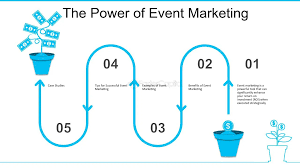In today’s fast-paced digital landscape, businesses are constantly seeking innovative ways to captivate audiences and drive engagement. Event marketing has emerged as a powerful strategy to create memorable experiences, build brand loyalty, and generate buzz. From grand product launches to intimate networking gatherings, event marketing leverages face-to-face interactions to leave a lasting impression on attendees.
The Essence of Event Marketing
Event marketing involves the planning, organizing, and executing of events to promote a product, service, or brand. This strategy goes beyond traditional advertising by offering experiential encounters that forge emotional connections with participants. Whether it’s a trade show, a seminar, a festival, or a virtual event, the goal is to create an immersive environment where potential customers can engage directly with the brand.
Key Benefits of Event Marketing
Enhanced Brand Awareness: Events provide a platform to showcase a brand’s personality and values, making it easier for attendees to remember and recognize the brand in the future.
Direct Customer Engagement: Face-to-face interactions at events allow businesses to receive immediate feedback, understand customer needs, and build personal relationships.
Lead Generation: Events are an excellent opportunity to capture qualified leads. Attendees are often more receptive to learning about products and services in an engaging and interactive setting.
Networking Opportunities: Events bring together industry professionals, influencers, and potential customers, creating a fertile ground for networking and collaboration.
Increased Sales: By demonstrating products and services live, businesses can effectively influence purchasing decisions, leading to increased sales.
Strategies for Successful Event Marketing
Define Clear Objectives: Understand the purpose of the event and set measurable goals. Whether it’s to increase brand awareness, generate leads, or launch a new product, having clear objectives guides the planning process.
Know Your Audience: Tailor the event to the interests and needs of your target audience. Understanding their preferences ensures the event will resonate and engage them effectively.
Create a Compelling Agenda: Design an agenda that includes insightful presentations, interactive sessions, and entertainment. A well-rounded program keeps attendees interested and involved.
Promote the Event: Utilize multiple channels to promote the event. Social media, email marketing, and partnerships with influencers can help spread the word and attract a larger audience.
Engage Attendees: Encourage participation through interactive elements such as Q&A sessions, live polls, and networking activities. Engaged attendees are more likely to have a positive experience and remember the brand.
Follow Up: After the event, follow up with attendees to thank them for their participation, provide additional information, and nurture leads. Post-event communication helps maintain the momentum and keeps the brand top-of-mind.
The Role of Visuals in Event Marketing
Visual content plays a crucial role in event marketing. High-quality images and videos capture the essence of the event, making it more appealing and shareable. Businesses often need to edit photos to enhance their visual appeal, ensuring that the imagery reflects the event’s vibrant atmosphere and professionalism. Well-edited photos can be used in promotional materials, social media posts, and post-event recaps to extend the event’s impact.
The Digital Dimension: Virtual and Hybrid Events
With the advent of digital technology, virtual and hybrid events have gained popularity. These formats offer flexibility and a broader reach, allowing participants from different geographical locations to join. Virtual events utilize online platforms to replicate the experience of physical events, offering features such as live streaming, virtual booths, and real-time interaction.

